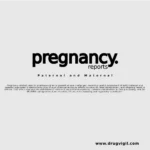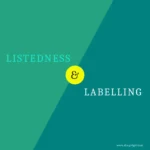This blog covers:
- The two main types of pregnancy reports
- Definitions of paternal and maternal exposure
- Key MedDRA coding conventions
Table of Contents
Introduction
In pharmacovigilance and reproductive toxicology, assessing maternal and paternal exposure to drugs is a common and important aspect.
If you work as a pharmacovigilance case processor, you’ve likely encountered numerous complexities when handling pregnancy-related cases.
Pregnancy Cases: An Overview
Processing pregnancy-related cases in pharmacovigilance can be challenging, with several gray areas and complexities, especially when preparing regulatory submissions. In many pregnancy reports, multiple cases may be interlinked, adding to the complexity.
Broadly, pregnancy cases are categorized into two main types — prospective and retrospective. However, another area that often causes confusion involves the two common types of exposure seen in pregnancy cases:
- Paternal exposure
- Maternal exposure
Note: The term exposure does not always indicate confirmed exposure to the drug. It highlights the need for monitoring and follow-up to ensure patient safety.
“Every pregnancy report tells two stories — one of life beginning, and another of responsibility in ensuring that every exposure is understood, monitored, and made safer for the future.”
Paternal Exposure
Paternal exposure refers to drug or substance exposure in a male prior to conception. It occurs when a man (e.g., a spouse or partner) is administered a drug, chemical, or exposed to radiation before conception, potentially affecting his sperm cells.
The focus is on whether such exposure could impact sperm quality, fertility, conception outcomes, pregnancy complications, fetal or neonatal health, or genetic material that may influence the offspring’s development and well-being.
Maternal Exposure
Maternal exposure is slightly more complex to assess, as it involves the woman who carries the pregnancy. There are generally two possible scenarios:
- The woman herself has taken a medicine or been directly exposed to a substance.
- The woman has been indirectly exposed through her partner’s treatment or substance use.
Note: This classification does not include cases where the baby is born with abnormalities or product-related outcomes (even if the baby is born healthy). Such instances fall under separate categories of pregnancy or neonatal cases.
MedDRA Coding Conventions
In MedDRA coding, pregnancy-related cases involve specific terms that must be applied logically based on the exposure type. Generally, three key codes are used to classify these scenarios:
- Paternal exposure during pregnancy
- Maternal exposure during pregnancy
- Exposure via partner (applicable to both way)
Key takeaways
Pregnancy cases in pharmacovigilance are often complex and may involve multiple linked reports.
Two main types of pregnancy exposures are recognized: paternal and maternal.
Primarily two types that are, paternal exposure and maternal exposure.
The term exposure does not necessarily mean that a drug was actually taken; it can apply to any one of either individual depending on the circumstances.
Stay informed and ensure safety in every pregnancy-related case.
Stay vigilant in pharmacovigilance case processing by understanding maternal and paternal exposures and applying best practices in MedDRA coding.
Conclusion
Understanding and accurately classifying maternal and paternal exposures are essential aspects of pregnancy case assessment in pharmacovigilance.
These cases require careful evaluation, thorough follow-up, and precise MedDRA coding to ensure data integrity and regulatory compliance.
Recognizing that exposure does not always imply confirmed drug intake helps case processors interpret reports correctly and focus on monitoring potential risks to both the mother and the developing fetus. Accurate documentation and coding ultimately contribute to safer medicinal use and better protection of public health.







Leave a Reply